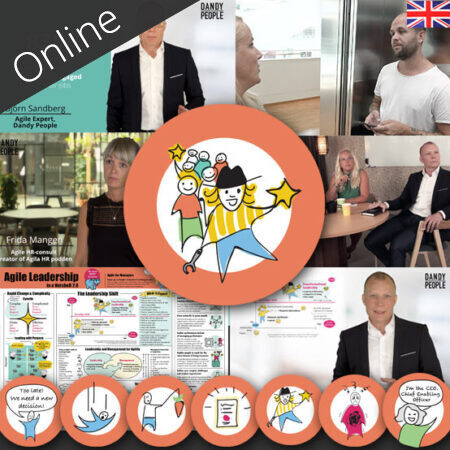Stress blocks the pathways in the brain that need to be open for effective action, decision-making, and learning.
In a knowledge-intensive work life, we have to be careful with increasing the pressure, so that it doesn’t switch to stress. It is counterproductive because it reduces the intellectual capacity that we need as much as possible to cooperate, solve problems and innovate.
This means that the leadership must be a safe haven for development and achievement, not a source of stress.
ENGLISH Free download of the Stress in a Nutshell Poster (PDF) >
SVENSKA Ladda ner postern på Svenska (PDF) >
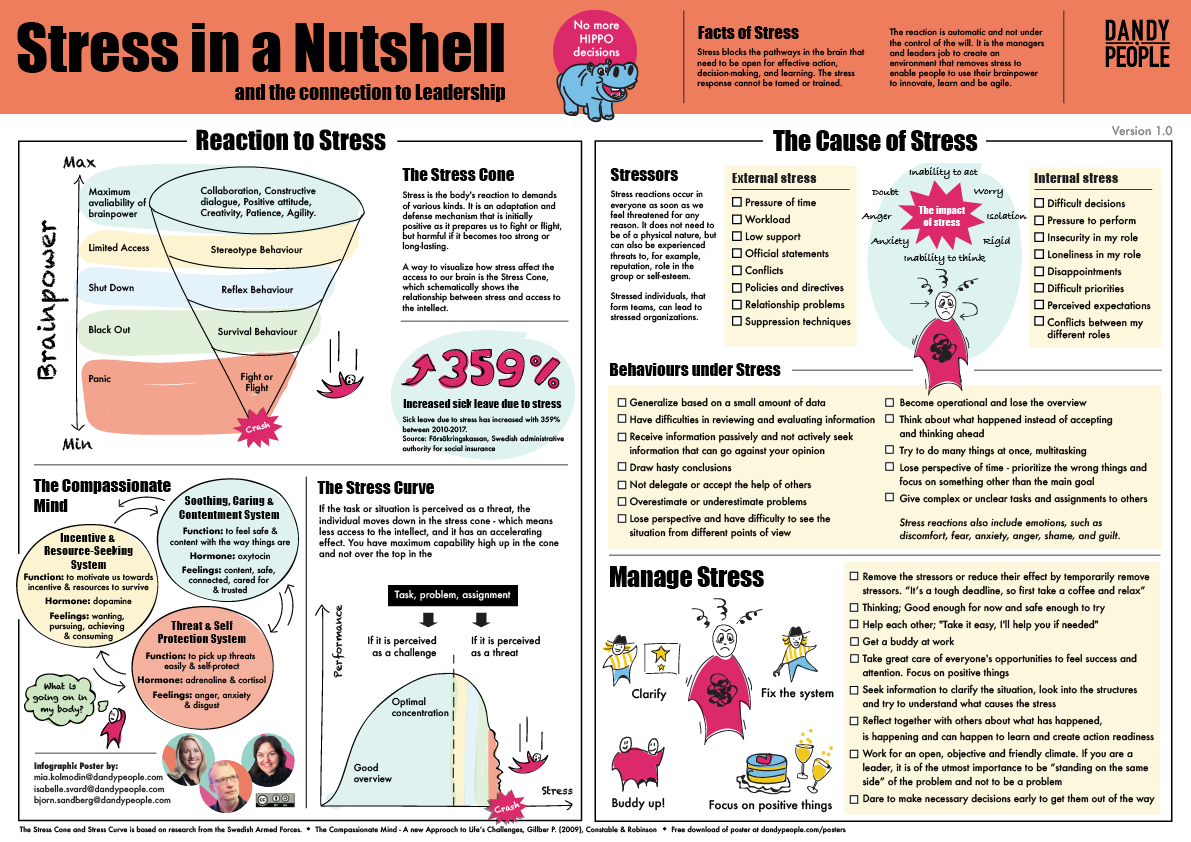
The cause of stress – Stressors
Examples of causes that can lead to stress in individuals, that in turn form teams, which can lead to stressed organizations.
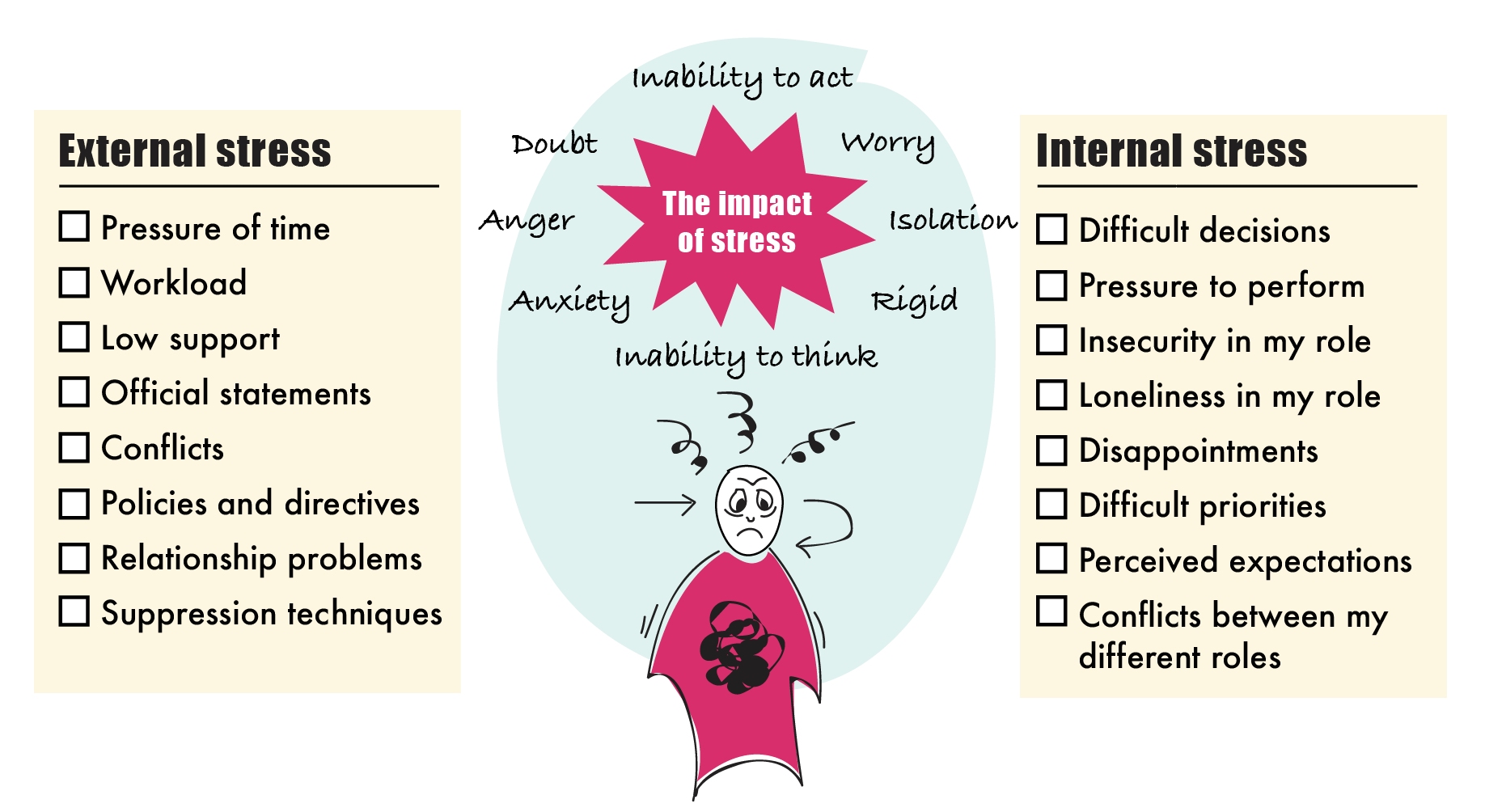
Try this to reduce stress
- Remove the stressors or reduce their effect by temporarily remove stressors. “It’s a tough deadline, so first take a coffee and relax”
- Thinking; Good enough for now and safe enough to try
- Help each other; “Take it easy, I’ll help you if needed”
- Get a buddy at work
- Take great care of everyone’s opportunities to feel success and attention. Focus on positive things
- Seek information to clarify the situation, look into the structures
- and try to understand what causes the stress
- Reflect together with others about what has happened,
- is happening and can happen to learn and create action readiness
- Work for an open, objective and friendly climate. If you are a leader, it is of the utmost importance to be “standing on the same side” of the problem and not to be a problem
- Dare to make necessary decisions early to get them out of the way
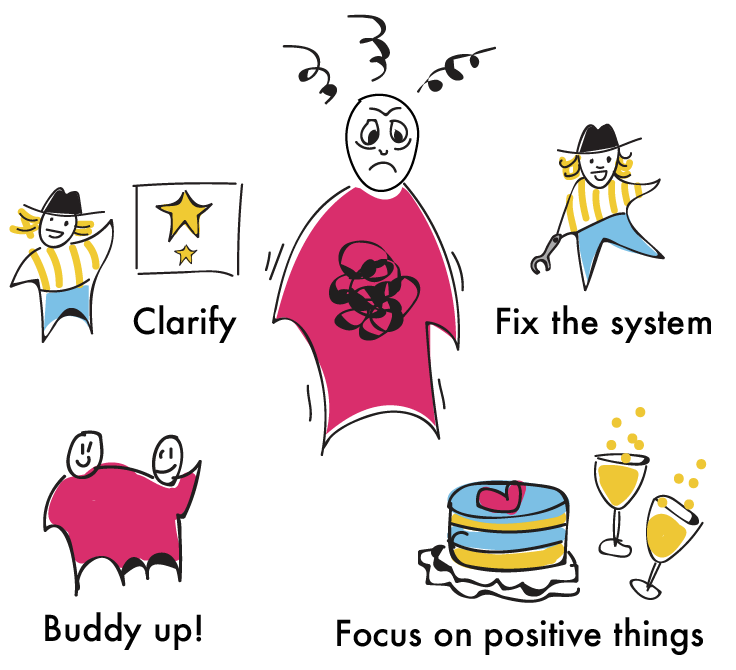
The Stress Cone
What is pressure for one person can be stress for another, and who will experience what often varies over time and between different situations.
We need to constantly work to create psychological safety out of respect for the individuals so that they can use their full potential for which they have been recruited. Everything else is purely a waste of intellectual capacity from a business perspective.
A way to visualize this is with the Stress Cone, which schematically shows the relationship between stress and access to the intellect.

The Performance Curve
If the task or situation is perceived as a threat, the individual moves down in the stress cone – which means less access to the intellect, and it has an accelerating effect.
Instead, if it is perceived as a reasonable challenge the individual moves upwards in the cone. Another way of describing this is with the help of the performance curve and you can see the connection between them by looking at the colors.

If someone is constantly being put in the red zone the risk of burnout is high. And we risk having lost the intelligence we have recruited completely.
To have knowledge of stress detection and prevention is an important responsibility of a leader and will create better performance and overall healthier work environments.
The Compassionate Mind
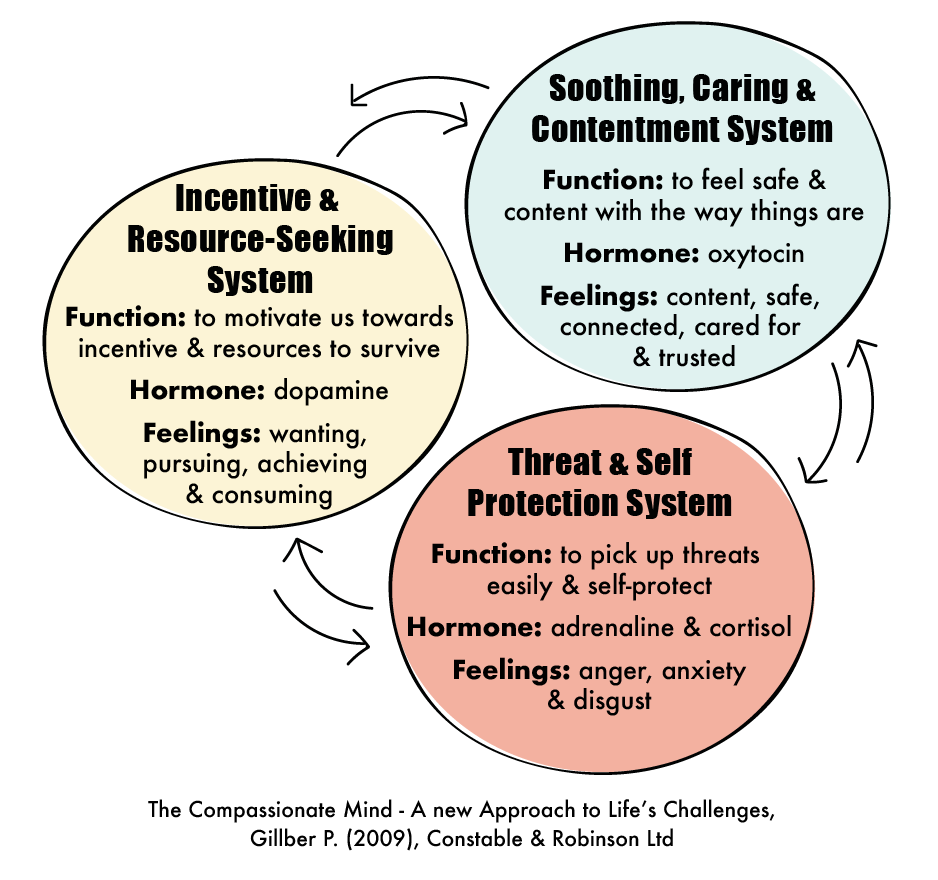
The human instincts are the same today as they were in the stone-age and our brain is divided into three motivational systems. The model created by Paul Gilbert consists of the red threat system, the blue drive system and the green soothing system.
When the blue drive system is started, we learn new things and explore new opportunities, this is also where we find our driving force and look for rewards. Here is where we find our competence, physical activity, sexual contacts and performance. If we focus too much in this area, on the status and the material, things that we believe will lead to long-term happiness then can instead make us unhappy as we will never really feel satisfied. Activation of the blue system secretes dopamine, which makes us tired and places high demands on recovery.
The red threat system is activated when we focus on managing different types of threats. The pulse will increase and it becomes difficult to see and take in other people’s perspectives. Our empathy falls when we feel threatened, which also leads to reduced ability to cooperate, easier to get into conflict and we become more aggressive. When the threat system is activated, adrenaline and the stress hormone cortisol is released in the body. Feeling stress for a short period of time is completely natural and a survival mechanism, it is when we activate the system all the time and have a constant influence of these hormones that it will damages our system.
The green soothing system exists to protect us in the context of nursing, caring, and attachment to others. It is activated when we feel that we belong, to a family, a team, an organization. And when we feel that we mean something to others and others care about us. When the soothing system is activated, planning, creativity, memory, and concentration are improved. We get better at reflecting, seeing the perspective of others and making wiser decisions. Safe brains are simply smart brains. When the security system is activated, oxytocin is released, a soothing hormone that gives us a sense of fulfillment and care, for ourselves and others.
When we are aware of these systems, we can also identify what triggers the different systems. It is important to find the right conditions for being able to feel good and function in the long term.
Free to download, use and share
The posters are published under Creative Commons License, so please use it and share it as you like. If you are interested in doing a translation to any other languages please let me know and I will help you with the file and publish it here in the blog as well.
You are free to:
Share — copy and redistribute the material in any medium or format
Adapt — remix, transform, and build upon the material for any purpose, even commercially.
This license is acceptable for Free Cultural Works.
The licensor cannot revoke these freedoms as long as you follow the license terms.
Under the following terms:
Attribution — You must give appropriate credit, provide a link to the license, and indicate if changes were made. You may do so in any reasonable manner, but not in any way that suggests the licensor endorses you or your use.
ShareAlike — If you remix, transform, or build upon the material, you must distribute your contributions under the same license as the original.
No additional restrictions — You may not apply legal terms or technological measures that legally restrict others from doing anything the license permits.
Here you find all the other Free Agile in a Nutshell-posters in the series that are now translated to 14 languages and downloaded over 70.000 times world wide.

